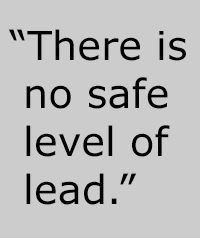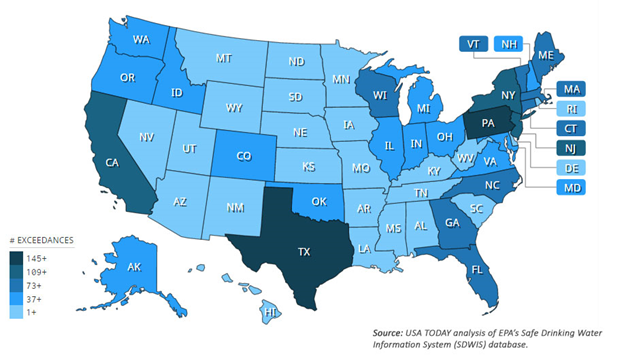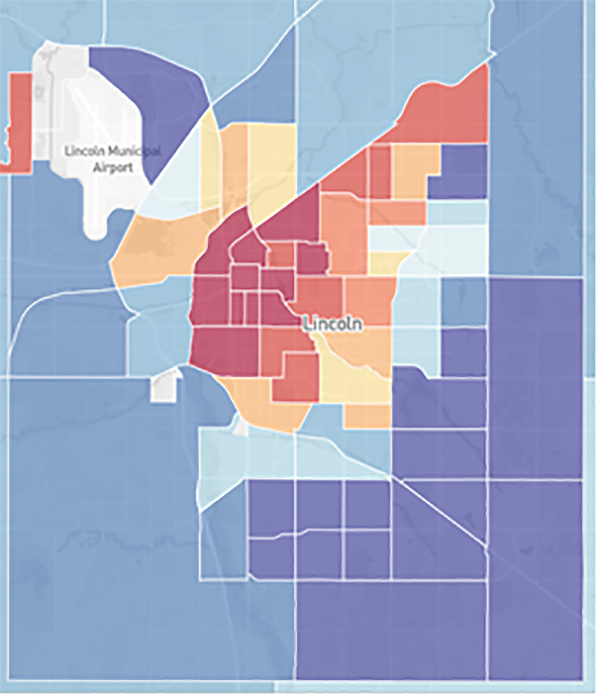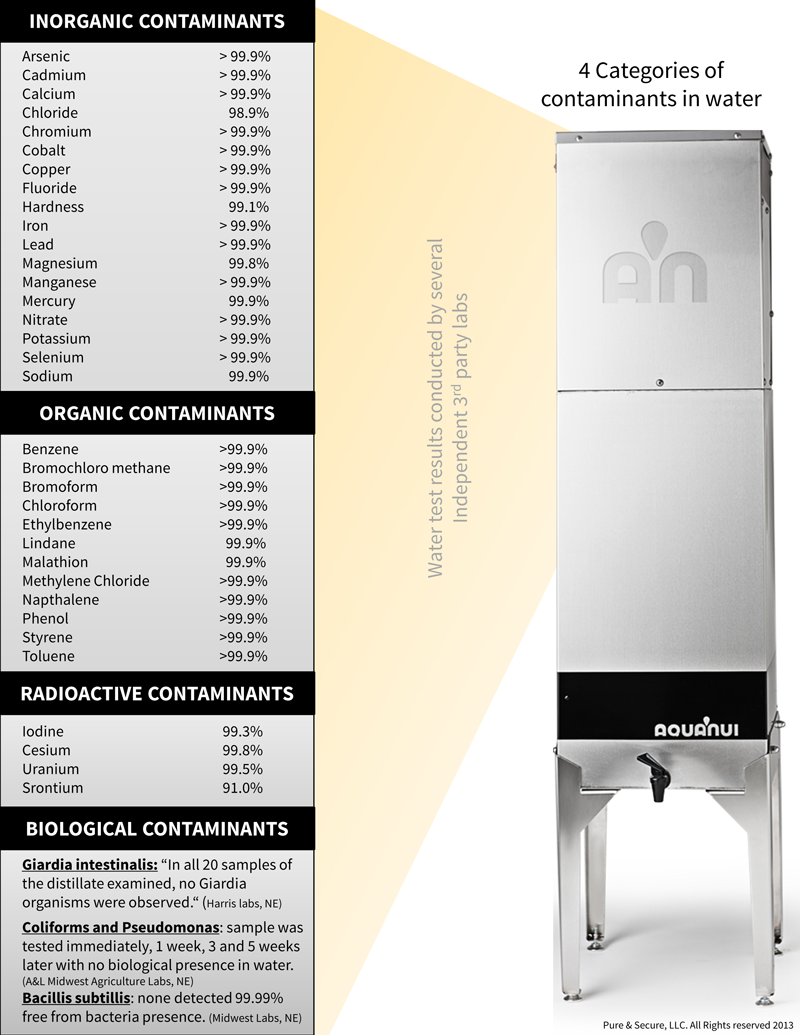Flint, Michigan Water Crisis
Nearly everyone is familiar with the Flint Michigan Water Crisis where lead was being leached from old pipes into drinking water. In 2014, in an effort to save money, the city of Flint switched from its original water provider to using water from the Flint River. Shortly after that, many residents noticed a change in color and taste. This problem was not from the river water itself only, but that they did not treat the water to ensure that it would not cause corrosion. Although officials of Flint knew for some time that the water contained lead, they did not sound the alarm.
“It’s regular, good, pure drinking water, and it’s right in our backyard.”
~Walling, Mayor of Flint
Fresno, Denver, Chicago and Many Other Cities Struggle with Lead
There are many shocking news stories currently circulating about lead in drinking water. In one zip code of Fresno, California, 13.6% of children under 6 had high levels of lead in their blood.1 In 2012, Denver found 13% of tap water tested that year had lead levels as high as 57ppb.2 In Chicago, tap water in 3 out of 10 homes sampled had lead concentrations above 5 parts per billion.3 There is no safe level of lead. Even if you are protecting your family at home, you must be sure that your school’s drinking water is safe as well as your work. We encourage everyone to become an advocate for their community. Ask your local schools for a lead report. Ask your employer to check for contaminants as well. If you are unsure, we recommend taking your own water with you to work or school.
Does Your State Have a Lead Problem?
Lead in drinking water is not just a problem for Flint, but all over the United States. Aging pipes are cause for concern for everyone. People who live in older homes, go to older schools or work in older buildings are at higher risk, but you can’t assume your water is safe. The only way to know is to test your drinking water. In the map below, you can see the EPA analysis by state. Texas, Pennsylvania, and California all have serious lead problems, but even if you don’t live in those states, you should still be concerned.
What is Your Local Lead Risk by Neighborhood?
While your state may look fairly safe based on the map above, Vox.com has compiled a “Risk by Neighborhood” map that shows if your particular neighborhood is at high risk based on a number of factors. NOTE: these are “areas of risk”, not known cases. https://www.vox.com/a/lead-exposure-risk-map. In Lincoln, Nebraska, where Pure & Secure / AquaNui is located, there are a number of neighborhoods in red and orange that mark areas of high concern. Lincoln is a medium sized city in Nebraska, so you can imagine that every city has similar issues, if not worse. In addition to that, many rural homes are also struggling with lead problems. Again, the only way to be sure is to test your water.
Health Risks of Ingesting Lead

Many people don’t realize, until it is too late, the health risks of ingesting lead. The Environmental Protection Agency (EPA) estimates that drinking water can make up 20 percent or more of an adult’s total exposure to lead. Lead causes long-term health problems that will not go away. Exposure to lead can cause any or all of the following adverse health effects. Lead is particularly harmful to babies, children and the elderly. If you believe you or a family member has been exposed to lead, please go to your doctor for a blood test. If you or your family test positive for lead, your doctor will recommend a treatment plan, but there is no way to remove lead from the body.
- Central Nervous System Problems
- Anemia
- Shorter Stature
- Lower IQ
- Hyperactivity
- Learning Disabilities
- Impaired Hearing
- Impaired Formation and Function of Blood Cells
- Reproductive Problems in Both Men and Women
- Seizures, Coma and Even Death
About 10 million Americans get their water via lead service lines. Many municipalities have encouraged people to run their faucet on cold for up to five minutes to flush lead out of pipes. In addition to that, some believe that common pitcher filters are enough to remove lead. This is not always the case. One must read filter specifications carefully and change filters frequently for them to be effective. Many people turn to Reverse Osmosis thinking that it is the solution to lead removal, but it is also not a consistently reliable. While it helps at first, the effectiveness of RO to remove lead decreases. Distillation is, by far, the most trustworthy method of removing lead from drinking water. Our third party testing concluded that AquaNui Water Distillers are able to remove over 99.9% of lead. This is peace of mind that other types of water purification just can’t offer.
More information about lead in drinking water can be found on our contaminant page for lead.
- Scientific American “Lead Poisoning Afflicts Neighborhoods across California “https://www.scientificamerican.com/article/lead-poisoning-afflicts-neighborhoods-across-california/
- Denver Post “Tap water in some Denver homes contains elevated lead. Now Denver Water, CDPHE and others are fighting about what to do.” https://www.denverpost.com/2018/05/03/denver-tap-water-lead/
- Chicago Tribune “Brain-damaging lead found in tap water in hundreds of homes tested across Chicago, results show.” http://www.chicagotribune.com/news/watchdog/ct-chicago-water-lead-contamination-20180411-htmlstory.html


